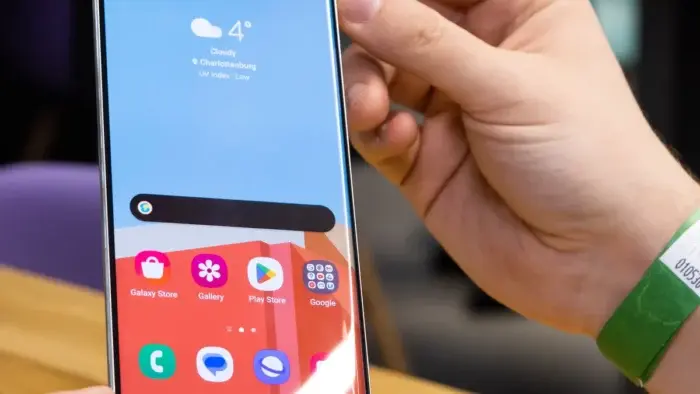Samsung’s ability to surprise seems to have waned, as the arrival of the new Samsung Galaxy S24 in January was anticipated. Extensive insights into the Galaxy S24, including initial impressions, were already available weeks prior, revealing a strong emphasis on AI functions in both the system and the SoC.
Nonetheless, the unexpected twist lies in Samsung emerging as formidable competition not just for Apple’s iPhone 15 but also for Google’s Pixel 8. Despite the alliance between Samsung and Google, the powerful AI features of the Galaxy S24 raise the question: Why opt for a Pixel when Samsung offers such compelling artificial intelligence functionalities?
Samsung Galaxy S24 Challenges Google Pixel

The dynamic between Samsung and Google reflects a symbiotic relationship that has significant implications. While there are compelling reasons to opt for a Google mobile, particularly with its customized version of Android, Samsung has recently thrown a challenge directly at Google—a move that carries considerable weight. To fully understand this, we need to delve into the intricate connection between these two tech giants.
To begin with, Samsung stands out as one of the leading mobile phone sellers, firmly positioning itself as a flagship player in the Android realm, and by extension, a crucial partner for Google. Despite the Galaxy devices being equipped with Samsung’s proprietary applications, Google invests substantially in contracts to ensure its apps take the forefront on the Galaxy platform.
This revelation, stemming from leaks during Epic’s antitrust lawsuits against Apple and Google, unveils sensitive but crucial information highlighting Google’s keen interest in maintaining a harmonious alliance with Samsung. This relationship is undeniably symbiotic, benefiting both parties.
However, the interdependence extends beyond the hardware-software relationship. Samsung, being a key player in chip manufacturing, produces notable chips such as the Exynos. When Google opted to veer away from Qualcomm Snapdragon for its Pixel 6 processors, they chose Samsung over TSMC. This decision solidified the notion that the Tensor chips used in Google’s Pixel 8 series are akin to Samsung’s Exynos.
The unveiling of the Exynos 2400 a few months ago hinted at the efficiency of these chips in artificial intelligence calculations. Leading industry experts to anticipate that they would bear similarities to the Tensor G3 of the Pixel 8 Pro. The recent presentation of the Galaxy S24 only confirms and strengthens this notion. Affirming that the idea was not only accurate but quite on point.
Galaxy S24 AI

Setting aside the Pixel’s camera prowess and the operating system, Google has notably concentrated on enhancing its phones’ day-to-day functionality through the capabilities of its Tensor processors. These AI-driven features, whether subtly integrated into the system or more visibly showcased like the Magic Eraser in the photo editor or the face-changing function in the Pixel 8, underscore Google’s emphasis on demonstrating the prowess of its processors in AI applications.
Gizchina News of the week
In the presentation of the Galaxy S24, Samsung echoed a similar focus, allocating substantial time not only to tout the robust GPU of their new phones but particularly to highlight AI-dependent functions. This strategic emphasis becomes evident in the notable presence of features like Object Eraser (akin to Pixel’s Magic Eraser), the Pixel wallpaper creator, and a function reminiscent of Magic Compose from Google’s last year’s I/O for Google Photos.
The influence extends beyond photography, with Samsung incorporating features such as a simultaneous translation system and subtitles for mobile content, borrowing concepts initially introduced by Google for its Pixel devices. The symbiotic relationship between Google’s AI-focused functions and Samsung’s chip manufacturing capabilities becomes apparent. With the South Korean company capitalizing on the collaborative innovations.
However, Samsung’s presentation wasn’t without controversy. While showcasing these cutting-edge functions, the company revealed its intention to charge for some of these features starting in 2025. This move, while potentially challenging, introduces a nuanced approach, considering that some functions rely on the mobile’s SoC capabilities rather than online computing. Google, on the other hand, offers seven years of Android updates without indicating any plans to charge for AI functions. Apart from limiting them based on the Pixel model.
This decision by Samsung has stirred debate, as it introduces the prospect of a payment barrier for features executed locally on the device. The strategy, while still subject to change before 2025, underscores Samsung’s commitment to maintaining its position as a stronghold in the Android ecosystem, even in competition with Google.
Despite this symbiosis, Samsung’s controversial decision to potentially charge for certain AI functions from 2025 adds a layer of complexity. While Google remains committed to providing Android updates without explicit plans for charging for AI functions, Samsung’s approach introduces a nuanced perspective. This move has sparked debates, particularly regarding the potential introduction of payment barriers for features executed locally on the device.





